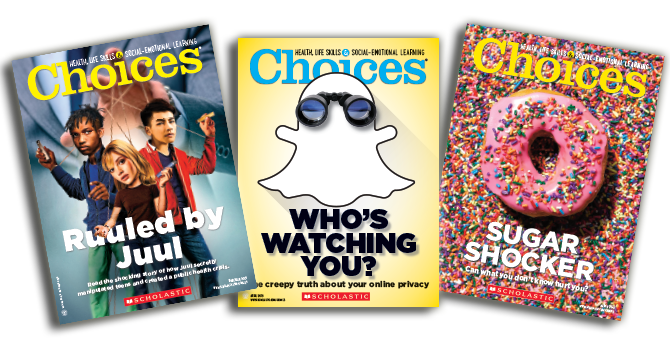Raise your hand if you’ve ever showed up at school wearing the same sneakers as your friends. Now think about your usual table in the cafeteria: Are there trait or behaviors—a hairstyle, some slang, a go-to snack—that connect you all, like an IRL tribe of the twinning emoji?
“If one person brings a certain food for lunch, it catches on, and suddenly everyone is bringing it,” says Sarah DeSanto, 14, an eighth-grader in West Hartford, Connecticut. “Last year, it was dried seaweed; this year it’s fruit snacks. It sounds dumb, but it’s so true.”
Psychologists have long studied how being part of a group—whether that’s your closest crew or a crowd of strangers—influences your behavior. They call this “herd mentality,” and while the way it guides your preferences for shoes and snacks may be harmless, understanding its role in bigger decisions can be a lifesaving skill. That’s because a body of research shows that teens take more dangerous risks—driving recklessly, trying drugs—when they’re part of a group.
“You’ve been conditioned to think of peer pressure as taunting, like ‘Do it!’ or ‘You’re a loser if you don’t,’” says Oscar Bukstein, professor of psychiatry at Harvard Medical School. “But the most dangerous kind of peer pressure is the influence you don’t really notice.”


